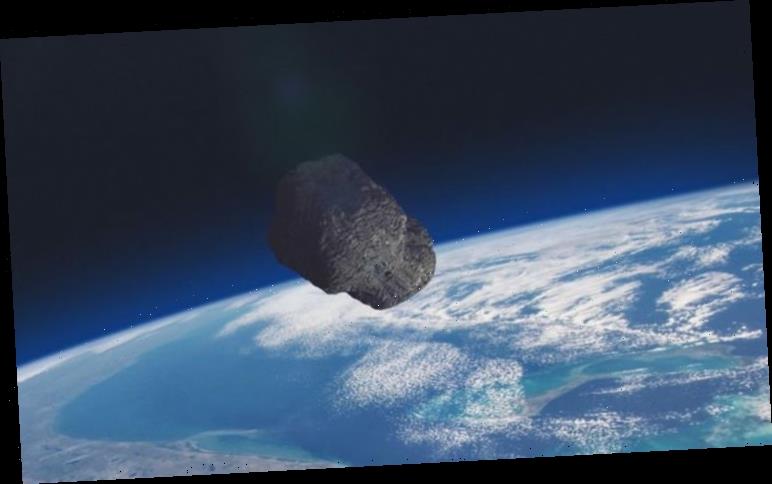Hayabusa-2: Samples from asteroid Ryugu return to Earth
When you subscribe we will use the information you provide to send you these newsletters.Sometimes they’ll include recommendations for other related newsletters or services we offer.Our Privacy Notice explains more about how we use your data, and your rights.You can unsubscribe at any time.
Sunday, February 14 – aka Valentine’s Day – witnesses a highly-unusual Near-Earth Object (NEO). Asteroid experts at the US-based space agency NASA have identified the visitor as 2021 CS6.
The Jet Propulsion Laboratory (JPL) Centre for Near-Earth Object Studies (CNEOS) site has revealed this cosmic relic will be making its closest encounter at 8.09pm GMT (12.09pm) PT.
At this time, this most romantic of flybys will see the asteroid a mere 0.00100 Astronomical Units (AU) from our planet.
This is the equivalent to 92,955 miles (150,000km) – one of the most uncomfortably-close asteroid flybys this month.
Although this may not seem particularly close to some, asteroid experts are correct in labelling this as “potentially hazardous”.
A statement on NASA’s CNEOS site states: “Potentially Hazardous Asteroids (PHAs) are currently defined based on parameters that measure the asteroid’s potential to make threatening close approaches to the Earth.
“Specifically, all asteroids with a minimum orbit intersection distance (MOID) of 0.05 AU or less.”
Fortunately, despite its potentially-troubling sounding description, there is no need to panic, as the asteroid will safely sail past our planet on Valentine’s Day.
And if further reassurance were ever required, the space space rock’s size would never trouble our planet’s protective atmosphere if it were heading our way.
The NASA asteroid tracking site has revealed at its largest, 2021 CS6 is approximately only 55ft (17m) across – the size of a house.
As a result, the rogue space rock would simply incinerate in our world’s thick atmosphere, even if it were on a collision course with us.
Using the latest precision tech, the CNEOS site is also able to disclose how fast it is barrelling through the void of space.
2021 CS6 is known to be travelling at a relatively-stately 8.28 km/s (18,521mph).
DON’T MISS
Black hole shock: Scientist’s dire warning to humans [VIDEO]
Asteroid apocalypse: Scientist warns of ‘city-destroying’ space rock [OPINION]
Why ‘Trillion tonne rock hurtling towards Earth’ was ‘bad news’ [EXPLAINED]
Yet despite this being 10 times faster the a bullet fired from a gun, this asteroid is actually relatively slow.
For example, 2021 CS6’s immediate processor, 2021 CV1, is travelling almost three time faster.
Ahead of the most romanic day of the year, NASA has released a fascinating false colour photo of Asteroid Eros.
An accompanying statement from the US-based space states: “Get out your red/blue glasses and float next to asteroid 433 Eros.
“Orbiting the Sun once every 1.8 years, the near-Earth asteroid is named for the Greek god of love. Still, its shape more closely resembles a lumpy potato than a heart.
“Eros is a diminutive 40 x 14 x 14 kilometre world of undulating horizons, craters, boulders and valleys.
“Its unsettling scale and unromantic shape are emphasised in this mosaic of images from the NEAR Shoemaker spacecraft processed to yield a stereo anaglyphic view.
“Along with dramatic chiaroscuro, NEAR Shoemaker’s 3-D imaging provided important measurements of the asteroid’s landforms and structures, and clues to the origin of this city-sized chunk of Solar System.
“The smallest features visible here are about 30 metres across.”
Source: Read Full Article




